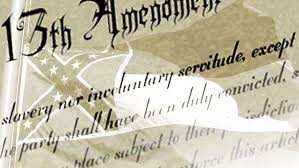CRP Bulletin/Noticiero recognizes significant people and landmark events in civil rights history.
150 YEARS AGO… In 1865 – The 13th Amendment to the U.S. Constitution was passed, thus abolishing slavery. The 13th Amendment owes its existence to the Emancipation Proclamation, the initial legislation that paved the way for equality in the United States. The Emancipation Proclamation states: “all slaves in the rebellious states ‘shall be then, thenceforward, and forever free.” Had it not been for the Civil War, the 13th Amendment would have been very different. Before the war broke out, Congress passed an entirely different thirteenth amendment ensuring the “legality and perpetuity of slavery.” Before it was ratified by the states, the Civil War ensued. Thus, although the 13th amendment is hailed for its abolishment of slavery, it wasn’t always the case. How different would the U.S. be if the ‘other’ 13th amendment had been ratified?
In 1865 – The 13th Amendment to the U.S. Constitution was passed, thus abolishing slavery. The 13th Amendment owes its existence to the Emancipation Proclamation, the initial legislation that paved the way for equality in the United States. The Emancipation Proclamation states: “all slaves in the rebellious states ‘shall be then, thenceforward, and forever free.” Had it not been for the Civil War, the 13th Amendment would have been very different. Before the war broke out, Congress passed an entirely different thirteenth amendment ensuring the “legality and perpetuity of slavery.” Before it was ratified by the states, the Civil War ensued. Thus, although the 13th amendment is hailed for its abolishment of slavery, it wasn’t always the case. How different would the U.S. be if the ‘other’ 13th amendment had been ratified?
65 YEARS AGO…

In 1950 — The U.S. Supreme Court ruled in Sweatt vs. Painter (1950) that a “law school for Negroes” separate from the University of Texas Law School would be “inferior in a number of areas.” Heman Marion Sweatt was denied admissions to the University of Texas Law School simply because of his race. Sweatt appealed to the state courts hoping to gain admissions to the law school. In response, the University of Texas opened a separate law school specifically where blacks could attend. The facilities, however, were far from equal. When would-be Supreme Court Justice Thurgood Marshall argued the case before the Supreme Court, he reasoned in terms of tangibles, i.e. the “differences in square footage of classrooms and numbers of faculty, course offerings, and books in the library.” Based on this argument, the Court unanimously found that a separate law school was unconstitutional as it violated the Equal Protection Clause. Therefore, Heman Marion Sweatt was admitted into the University of Texas Law School. This case provided precedent for a later case that would become the end to ‘separate but equal,’ Brown vs. Board of Education (1954).
60 YEARS AGO…
In 1955 — The New York City Ballet welcomed for the first time ever an African-American dancer, Arthur Mitchell. After graduating from a New York performing arts high school, Arthur went on to study at the Katherine Dunham School of Dance, followed by his acceptance into the School of American Ballet (school of the New York City Ballet). Although facing discrimination from students, parents, and from critics, he then joined the prestigious New York City Ballet, where he was the only African-American principal dancer until 1970. After his success with the New York City Ballet, Mitchell formed the Dance Theatre of Harlem, the first African-American classical ballet company. His efforts paved the way for other minorities also aspiring to dance professionally.
